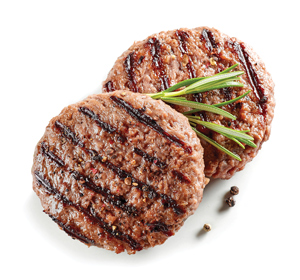Ventilation systems situated over cook lines remove cooking heat, effluent and odors. This engineered system includes several components, but exhaust hoods are typically placed over the cook line and in the dishwashing area. The size and shape vary depending on the equipment underneath. Consider federal and local codes when specifying this equipment.
 Type I ventilation systems are grease rated for positioning over grease-producing appliances, including ranges, griddles, fryers and charbroilers. Type II or B units, also called vapor hoods, are designated to handle heat and steam over dishwashers and some oven types.
Type I ventilation systems are grease rated for positioning over grease-producing appliances, including ranges, griddles, fryers and charbroilers. Type II or B units, also called vapor hoods, are designated to handle heat and steam over dishwashers and some oven types.
Low proximity style hoods sit lower and closer to appliances and are commonly used in quick-service restaurants with fryer banks or kitchens with low ceilings. Island style hoods are designed for middle of the room placement.
Filtering options depend on the ventilation process, the system’s design and the level of grease extraction necessary. Utilizing more filters can help control grease buildup.
Pollution control systems remove smoke, grease and odors before these reach the airstream. The two types include a filter-style unit that utilizes carbon and an electrostatic precipitator. The latter charges particles as they go through the unit and collects them, while using carbon for odor removal.
Operators can choose from different filtering options or grease removal apparatuses, including low-tech baffle systems and high-efficiency extractors. The type that best suits the operation depends on the ventilation process, the system’s design and the level of grease extraction necessary. Utilizing more filters can help control grease buildup.
Ventilation systems come equipped with exhaust fans that can mount on the facility’s roof or an outside side wall. Belt or direct drive fans are available.
Make-up air units are another element of ventilation systems. When unbalanced or poorly designed, kitchen exhaust systems can allow heat and smoke to spill into the kitchen, negatively impacting air quality, back-of-house temperatures and utility bills. The load generated by cooking units will determine how much make-up or replacement air is necessary to balance the environment. Without replacement air, negative pressure is created in the kitchen, which can compromise the operation of cooking equipment.
There are four types of systems that minimize the air velocity around the hood. One system brings in untempered air from outside into the kitchen; another brings in outside air and heats it; a system is available that brings in outside air and cools it; and another both heats and cools outside air, depending on the temperature requirements. DOAS or Dedicated Outside Air Systems also are available that provide complete temperature and humidity control of makeup air.
Ventilation systems’ fire suppression equipment and controls typically incorporate tanks of chemical agents activated mechanically to contain or extinguish fires. When a sensor at the duct connection gets to a certain temperature, this fire suppression system is electronically activated. Also, bigger hoods with more overhang and end panels can help contain fires.
Demand control kitchen ventilation or DCKV automatically varies the ventilation system’s operation to accommodate peak and down periods. This is accomplished with heat only, where sensors or optics measure the heat differences between the hood and the room. DCKV also can react to both the heat and exhaust, which typically results in a quicker reaction time.
It’s important to check regulations, as some state codes require DCKV if there are 5,000 CFMs (cubic feet of air per minute) of exhaust or more. Although these systems can be costly, the return on investment with energy savings is generally less than two years.
Due to sanitation requirements, hoods need to be either 100 percent stainless steel or stainless in exposed areas, such as food zones. Automated cleaning systems are available, and an ultraviolet light option inside hoods helps break down grease in high-volume applications.
Much of ventilation system innovation focuses on managing energy and usage. Electrically commutated motors, or ECMs, are a more recent advancement that can adjust fan speed easily and are more energy efficient. There are also newer systems that can control makeup air by zone. Additional sensors can be added on some units to detect CO2, fire or odors.
One of the biggest changes recently is the involvement of prefab ductwork that is already made and put together in the field, with no welding required. There are also ductless systems that provide added flexibility. Ventilation systems that are customized to specific equipment models help operators dial in exhaust rates to further minimize costs. Manufacturers also are getting more creative with exterior hood surfaces for front-of-house display cooking.



